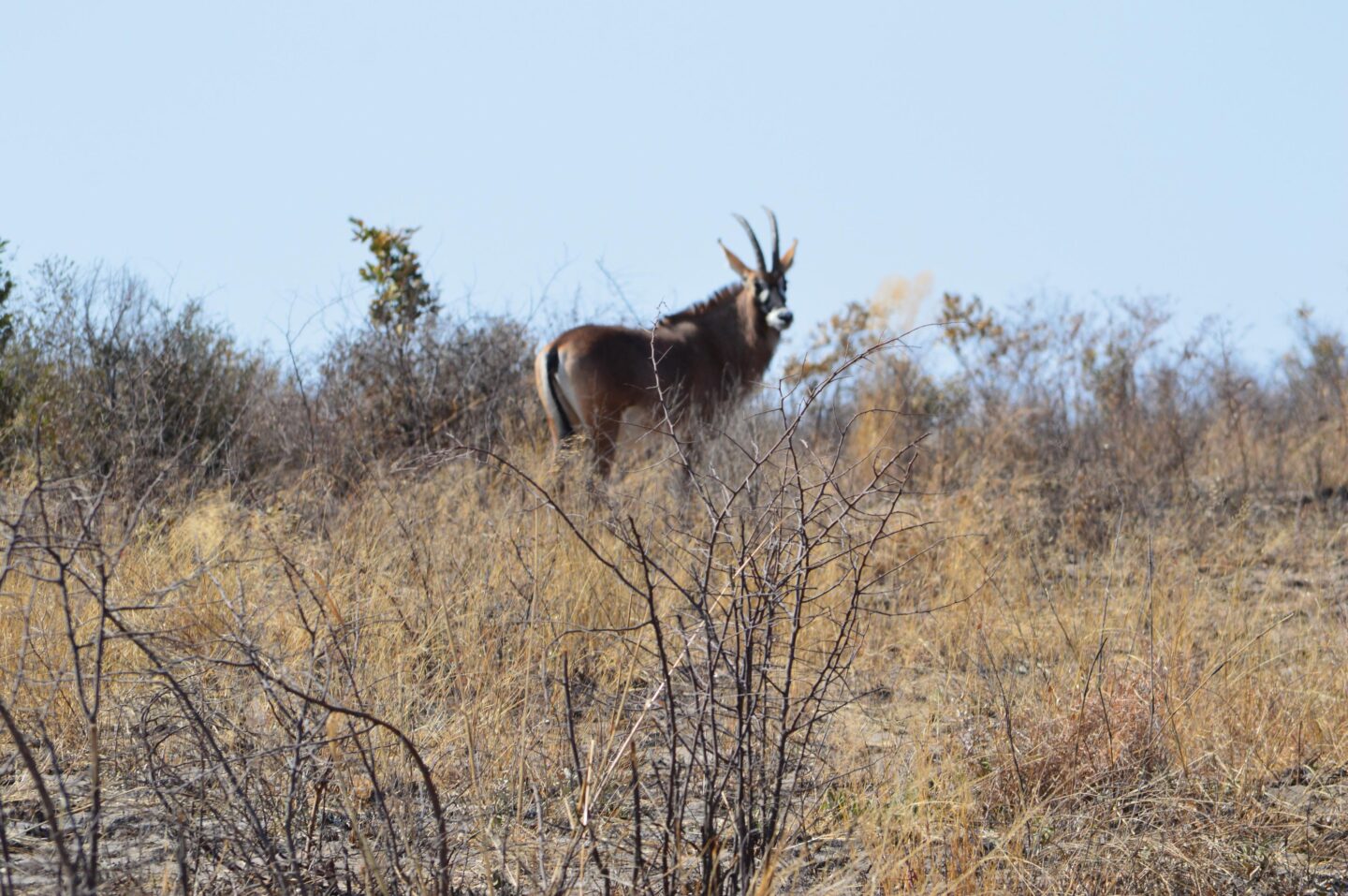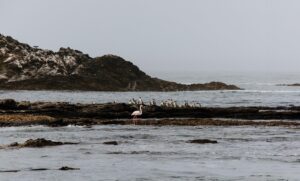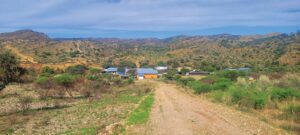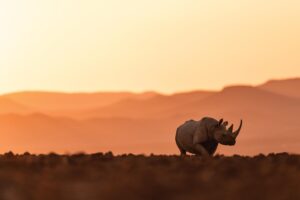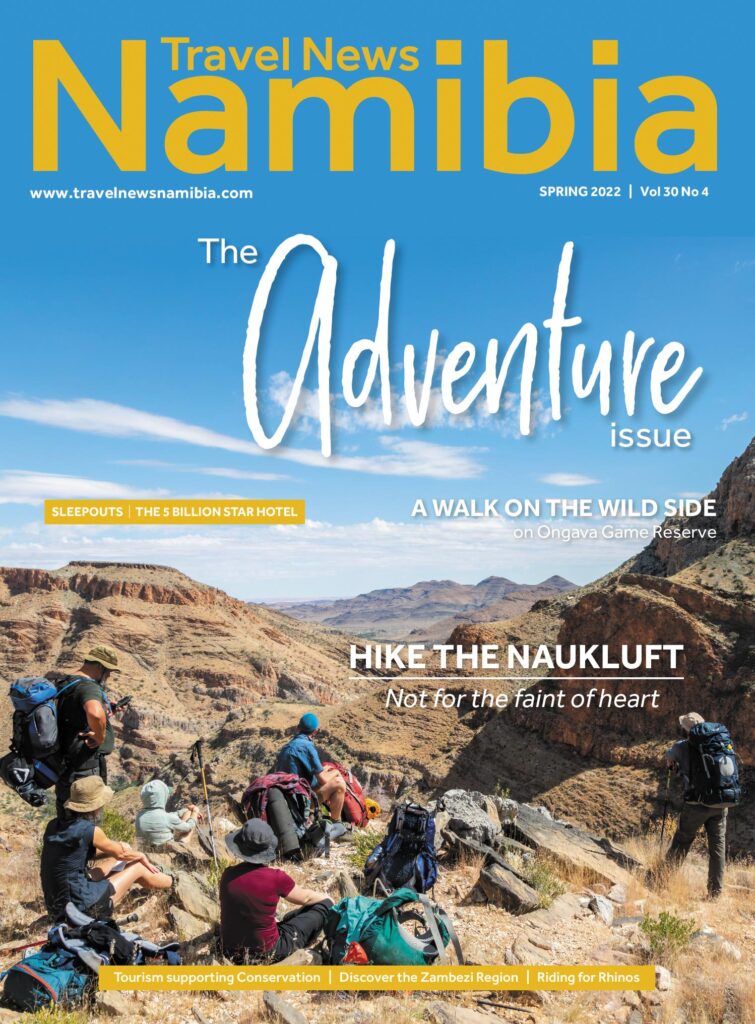
Khaudum National Park offers an unforgettable and authentic wilderness experience for adventurous travellers seeking solitude in one of Namibia’s most remote corners. Its deep, loose sandy tracks and large herds of elephants are legendary, and the park attracts a breed of intrepid travellers.
On a recent visit to Khaudum, I decided to explore the southern half of the park from the comfort of Sikereti Camp. It reopened in July after it was closed officially in March 2019 and discouraged for use as far back as 2015 because of its dilapidated state.
If you prefer sleeping under the stars, there are four spacious campsites, each with washing-up facilities, hot water showers (donkey-fired), wash basins and flush toilets. Visitors seeking luxury in the bush can opt for the self-catering en-suite safari tents, each with a wooden deck and a braai place. In keeping with Khaudum’s wilderness atmosphere, the camp is unfenced.
To ensure that the protection of wildlife and the support of rural communities go hand in hand, the privately operated camp collects a 6% concession fee on behalf of the Khaudum North Complex Conservancy and the Gciriku Traditional Authority.
The game-viewing experience in Khaudum has been enhanced by viewing platforms at nearly all the waterholes in the park. Water reservoirs have been built to relieve the congestion of elephants, while separate drinking places for other species are also provided.
As the temperatures were fairly chilly, the game tended to drink later in the day than during the hot summer months. So I set off on a leisurely drive to one of the viewing platforms with some snacks, binoculars, a camera and a bird book after a hearty brunch. At the viewing platform I simply bided my time to watch the passing parade of animals. Then, around mid- afternoon, I made my way to another waterhole and waited for the animals to show up.
The highlight was undoubtedly an afternoon visit to Tsoanfontein where a pack of six African wild dogs was lying in the shade of the viewing platform. Khaudum is the heartland of one of the largest roan populations in southern Africa and several of these iconic antelopes showed up during the afternoon.
The park attracts over 4,000 elephants during the dry season – that is more than one elephant per square metre. Clouds of dust in the distance signalled the approach of herd after herd of elephants. I counted more than 100 in one herd.
Attracted by the smell of a kudu carcass in the waterhole, a lone spotted hyaena made its appearance with an opportunistic black-backed jackal in tow. But, on becoming aware of the wild dogs, the hyaena beat a hasty retreat. Then, another highlight followed – a honey badger approached the waterhole with its characteristic jog-trot.
During my three-day visit, I ticked 16 mammal species on my checklist. In addition to the species already mentioned, I added kudu, giraffe, steenbok and warthog (all common). Blue wildebeest, gemsbok, eland and common impala (restricted to the south of the park) were among the other species I saw, as well as a few small mammal species.
Although game-viewing is an integral part of a visit to Khaudum, it is its wilderness atmosphere that makes a visit so special. The silence, solitude and the anticipation of always expecting the unexpected is what draws intrepid travellers back time after time. Khaudum’s tracks are less travelled and the only congestion you might experience is a herd of elephants crossing ahead of you. But be warned: Khaudum is not for the faint-hearted! TNN
For more information about Sikereti Camp visit www.khaudum.com.na
KHAUDUM FAST FACTS
- The tracks in the south of the park are mostly hard surface or slightly sandy, while the tracks north of Dussi and Tari Kora waterholes are deep sand requiring four-wheel-drive and tyres to be deflated.
- Overnight facilities are available at Sikereti in the south and Xaudum campsite in the north.
- It is highly advisable that parties should consist of at least two four-wheel drive vehicles. You might be in for a very long wait before help arrives, should you experience a breakdown or an emergency.
- It is not recommended to tow a trailer, even if it has the same track width as the towing vehicle, least of all in the deep sand in the northern section of the park. You might also need to reverse when confronted by an elephant.
- Fuel is available at Tsumkwe, 52 km from the southern park gate. From Khaudum Gate in the north it is a 46 km drive through deep, loose sand to the B8. Fuel is available at Divundu (90 km east of Katere) and at Rundu (120 km west of Katere).

